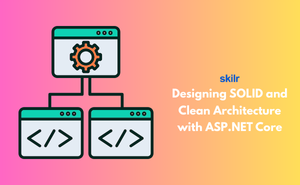👇 CELEBRATE CLOUD SECURITY DAY 👇
00
HOURS
00
MINUTES
00
SECONDS

The Designing SOLID and Clean Architecture with ASP.NET Core certification equips developers with techniques to build organized and maintainable software systems. SOLID principles guide the coding process to avoid rigid, error-prone designs, while Clean Architecture separates concerns within an application, ensuring each component has a specific responsibility. Applying these concepts in ASP.NET Core allows developers to produce reliable, extensible, and scalable applications suitable for real-world projects.
Put simply, this certification helps you structure your ASP.NET Core applications effectively. By following SOLID principles and Clean Architecture, your projects become modular, easy to test, and simple to extend. This knowledge is crucial for creating professional applications that can grow and evolve without technical debt or messy code.
This exam is ideal for:
Industry-endorsed certificates to strengthen your career profile.
Start learning immediately with digital materials, no delays.
Practice until you’re fully confident, at no additional charge.
Study anytime, anywhere, on laptop, tablet, or smartphone.
Courses and practice exams developed by qualified professionals.
Support available round the clock whenever you need help.
Easy-to-follow content with practice exams and assessments.
Join a global community of professionals advancing their skills.
It’s a way to structure software so that different layers are independent, making code more modular and maintainable.
Yes, the certification covers writing testable code and using dependency injection.
Yes, especially those working on the backend or with ASP.NET Core applications.
Absolutely, it’s ideal for developers aiming to become solutions architects or technical leads.
Yes, a capstone project demonstrates applying SOLID and Clean Architecture in ASP.NET Core.
Basic knowledge helps, but patterns are explained in the course.
It prepares developers for high-level roles requiring clean, maintainable, and scalable code.
ASP.NET Core developers, software engineers, and backend developers seeking professional architecture skills.
Intermediate ASP.NET Core knowledge is sufficient; advanced concepts are taught with examples.
SOLID helps create code that is flexible, maintainable, and easy to test.